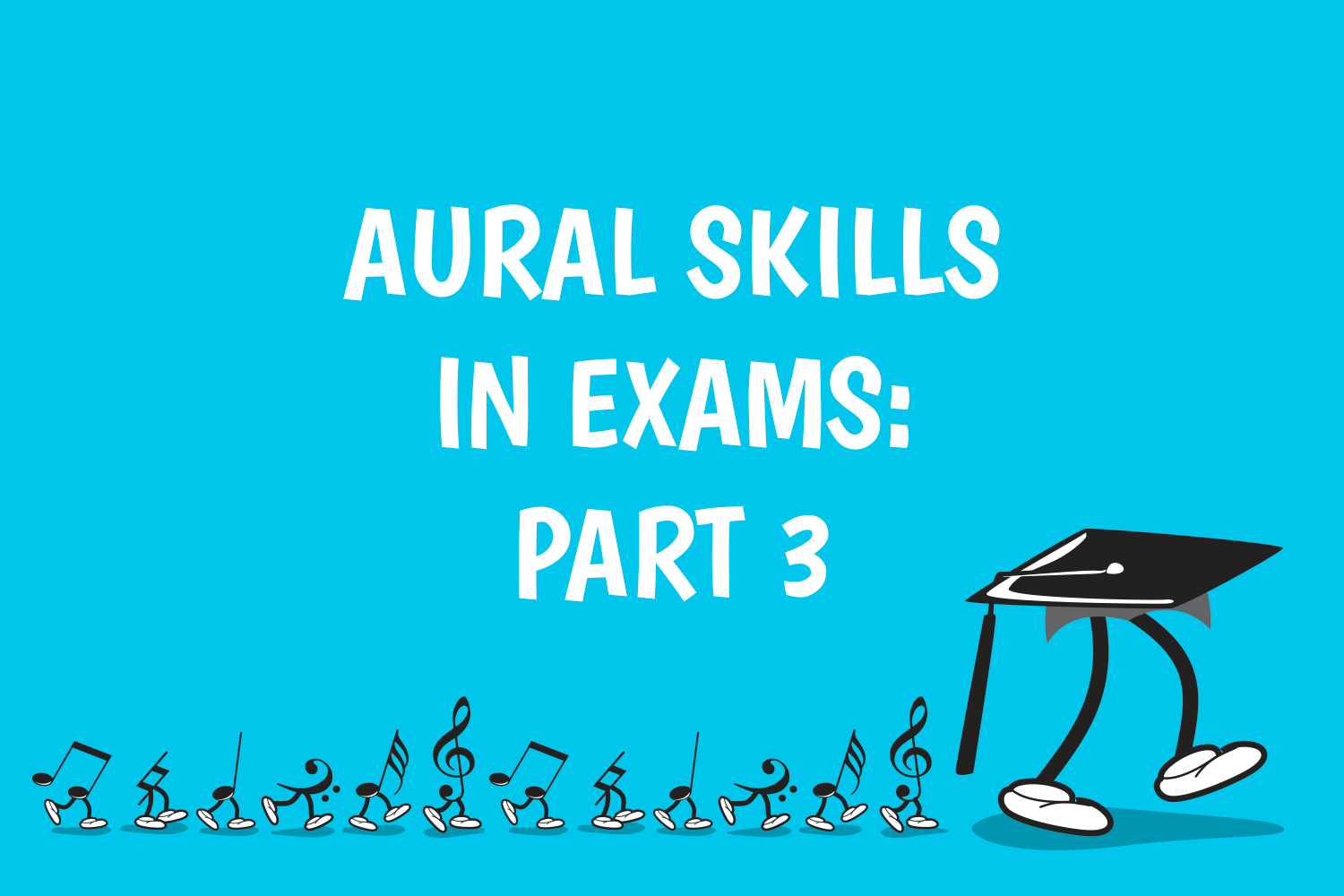Aural Skills in Exams: Part 3

In Part 1 and Part 2 of this blog series I talked about how to get students to sing, the main goals to aim for in aural skill preparation, and tips on each component of aural tests in an exam.
Here in Part 3 I’ll deal with melodic references. Below is a list of associations between intervals and triads and famous pieces/songs. You may not be familiar with some of the pieces listed, so there are plenty of options for each interval and triad. When students DO recognise and use these, it makes life so much easier!
Intervals (ascending):
Minor 2nd: The Entertainer, start of chromatic scale.
Major 2nd: Happy Birthday, start of major and minor scales.
Minor 3rd: Greensleeves, Supercalafragilistic, Smoke on the Water, Brahms Lullaby.
Major 3rd: Blue Danube, When the Saints Go Marching In, Kumbaya.
Perfect 4th: Away in a Manger, Advance Australia Fair, Amazing Grace, Star Wars, Love Me Tender, Auld Lang Syne.
Augmented 4th: The Simpsons (opening vocal), Maria (West Side Story).
Perfect 5th: Twinkle Twinkle, The Last Post, Lavender’s Blue, Mamma Mia intro.
Minor 6th: Love Story (descending then ascending), Titanium, Mamma Mia intro (second interval) Chopin Waltz op. 64 no.2.
Major 6th: My Bonnie Lies Over the Ocean, Jingle Bells verse.
Minor 7th: Somewhere (West Side Story), Star Trek.
Major 7th: In ‘Pure Imagination’ (from Willy Wonka and the Chocolate Factory) there is a major 7th : ‘Come with me and you’ll be in a world of pure imagination’
Perfect 8ve: Somewhere Over the Rainbow, Stranger on the Shore, Lonely Goat-herd (Sound of Music).
Intervals (descending):
N.B. Descending Major and Minor 7ths are the only intervals not listed below. The best way to identify these is that they are very large and very awkward sounding intervals!
Minor 2nd: Fur Elise, chromatic scale.
Major 2nd: Yesterday (The Beatles), Mary had a Little Lamb, Three Blind Mice, Hot Cross Buns.
Minor 3rd: This Old Man, Morning (Grieg’s Peer Gynt), Little Brown Jug, Hey Jude, Oranges and Lemons.
Major 3rd: Summertime, Swing Low Sweet Chariot, Goodnight Ladies, Beethoven’s 5th Symphony, Tchaikovsky’s Piano Concerto no. 1.
Perfect 4th: Born Free, Old McDonald, I’ve been working on the Railroad, Clementine, Food Glorious Food, Advance Australia Fair (ascending then descending)
Augmented 4th: ‘Mistake’ sound in game shows
Perfect 5th: Bach’s Minuet in G, them from The Flintstones, Swan Lake
Minor 6th: Love Story, Arthur’s Theme.
Major 6th: Music of the Night (Phantom), Nobody Knows the Trouble I’ve Seen
Perfect 8ve: Theme from The Young and the Restless
Triads (major):
Root position (ascending): The Blue Danube, Kumbaya, Morning Has Broken.
Root position (descending): Oranges and Lemons, Ag-a-doo (Pineapple song)
1st inversion (ascending): In the Mood (Glenn Miller)
1st inversion (descending): Opening broken chord from Clocks* (Coldplay), All of Me (Frank Sinatra)
2nd inversion: Sustained chord at beginning of Simpsons theme.
Triads (minor):
Root position: Third descending chord from Clocks intro (Coldplay).
1st inversion: Theme from Phantom of the Opera, Pathetique Sonata 1st movt (Beethoven), Funeral March (Chopin).
2nd inversion: Second descending chord from Clocks (Coldplay).
*Clocks is an excellent source for analysing and identifying descending triads. The chords are Eb major 1st inversion, Bb minor 2ndinversion, Fm root position.
Conclusion
By introducing helpful references and regular aural drills into lesson time, you are helping your students become better musicians, and have a better chance at doing brilliantly in the aural section of their exam! They will no longer panic the week before, and neither will you.
As you will have discovered from reading this blog series, aural skills should be seen as an ongoing process of improvement, just like instrumental practice. With singing ability, regular practice in lessons, and help with memorisation, your student will become both very confident and very good at aural tests. Instead of dreading it, they will start to find it a breeze. What a relief!
We are all time poor in our students’ instrumental lessons. So if you start to run out of time in your lesson, and cannot practise an aural test in the format of the exam, remind your students that listening is the key. Parents and siblings can sometimes help out with testing at home. And now with the list of all those famous songs and pieces, who would have guessed that learning intervals could actually be fun? Good luck!
